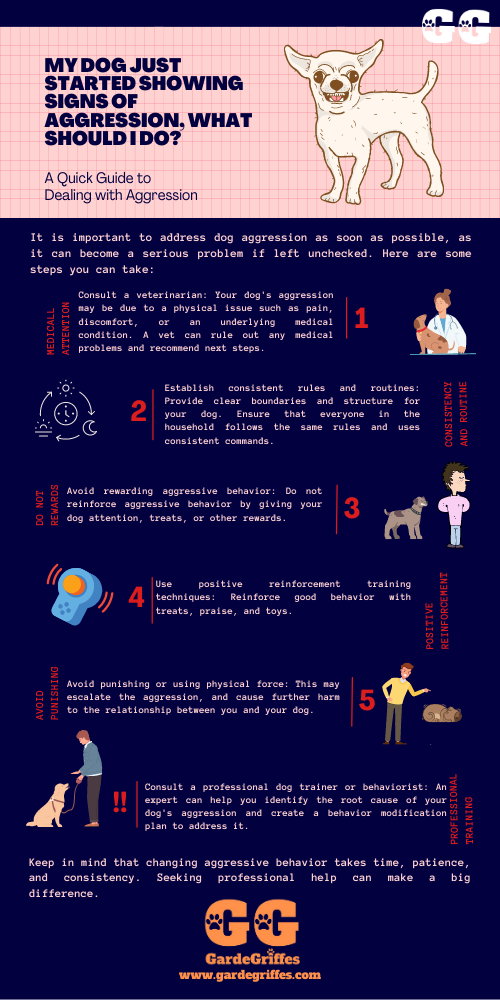My dog just started showing signs of aggression, what should I do?
Establishing consistent rules and routines is an essential first step when dealing with a dog that is showing signs of aggression. Providing clear boundaries and structure for your dog is key to establishing a strong bond between you and your pet. Ensure that everyone in the household follows the same rules and uses consistent commands, to help your dog feel secure and understand what is expected of them.
Avoiding rewarding aggressive behavior is also essential when trying to manage and reduce aggression in dogs. It’s important not to reinforce aggressive behavior by giving your dog attention, treats, or other rewards when they display such behavior. By doing so, you’re only teaching them that this type of behavior is acceptable, and encouraging them to continue acting in this way.
Using positive reinforcement training techniques is a proven method of reinforcing good behavior in dogs, which can be particularly useful when dealing with aggression. Reinforcing good behavior with treats, praise, and toys can help your dog associate positive experiences with good behavior, and help to build trust between you and your pet.
It’s also essential to avoid punishing or using physical force when dealing with aggressive behavior in dogs. Such behavior can be counterproductive, as it can escalate the aggression, and cause further harm to the relationship between you and your pet. Positive reinforcement and consistency are key to addressing and reducing aggressive behavior in dogs.
If the above steps do not work, then consulting a veterinarian should be the next step. Your dog’s aggression may be due to a physical issue such as pain, discomfort, or an underlying medical condition. A vet can rule out any medical problems and recommend next steps.
Consulting with a professional dog trainer or behaviorist is also a good option if the problem persists, as an expert can help identify the root cause of the aggression, and develop a behavior modification plan to address it. Often, aggressive behavior in dogs is caused by fear or anxiety, and a trained expert can help develop a plan to gradually reduce these feelings through positive reinforcement training.
It’s important to remember that changing aggressive behavior takes time, patience, and consistency. Seeking professional help can make a big difference and is recommended if you’re struggling to manage the issue. With the right approach and care, it’s possible to successfully address and reduce aggressive behavior in dogs, and develop a stronger bond with your furry friend.


